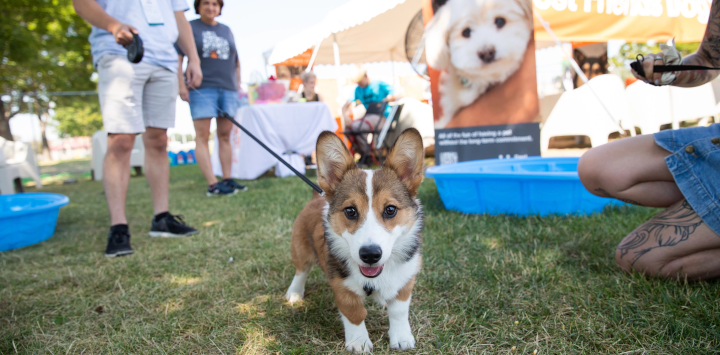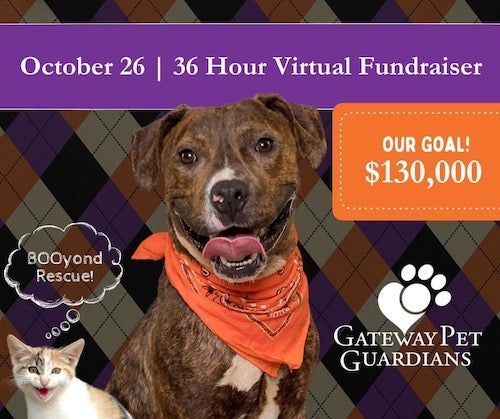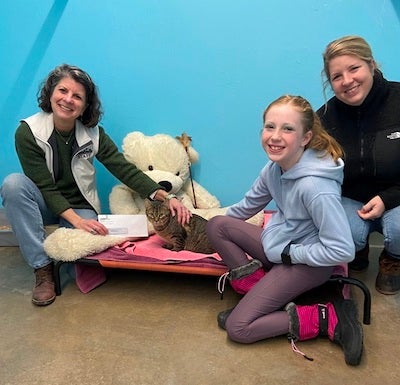
Are big events worth the bother?
February 28th, 2023
Have you ever wondered if the six months it took to put on your annual black-tie gala was worth the money it brought in? Sure, COVID’s no-in-person policies mandated that organizations devise ways to find money that didn’t involve 5Ks or wine-tasting auctions, but not every organization used that time to take stock of whether the answer to that question was “Yes.”
For some, throwing shindigs still makes sense; for others, they decided to ditch or scale down events in favor of other, less resource-intense ways to channel dollars into their coffers. Taking the time to do an analysis of your return on investment helps organizations make smart, strategic decisions about fundraising that nets results without burning everyone out in the process.
Putting virtual options into perspective
Like many shelters and rescues, Gateway Pet Guardians (GPG) in St. Louis had success with virtual events during COVID, so much so that they’re keeping them as an important plank in their fundraising strategy. They are also retiring some of their in-person events.
“The pandemic helped us realize that we couldn’t rely so heavily on large events to bring in funding,” says Alisha Vianello, GPG’s executive director. “Additionally, events tend to be very resource-intensive yet the net revenue tends to not be very much. We knew we had to fundamentally change.”
 In 2021, GPG held a 36-hour virtual fundraiser called Beyond Rescue (or “Booyond Rescue” if you prefer) that used social media and email to tell stories about medical cases and programs. They found matching sponsors/donors ahead of time and enlisted staff and volunteers to do cold call promotions of the event. The organization also encouraged peer-to-peer fundraising where people could organize personal campaigns to raise money.
In 2021, GPG held a 36-hour virtual fundraiser called Beyond Rescue (or “Booyond Rescue” if you prefer) that used social media and email to tell stories about medical cases and programs. They found matching sponsors/donors ahead of time and enlisted staff and volunteers to do cold call promotions of the event. The organization also encouraged peer-to-peer fundraising where people could organize personal campaigns to raise money.
“Some people competed against one another to raise the most money,” Alisha says. “In the end, we raised $136,000 in the 36 hours.”
While doing them virtually is something to consider, there are pros and cons to that as well, cautions Beth Saradarian, executive director at Rutland County Humane Society (RCHS) in Vermont.
“You need to look at the amount of work they require. For our online auction, a board member packaged up all the items and mailed them out, plus we had to bill people and if there were issues with their credit cards that took more time,” Beth says. “Not to mention you have to take pictures of the items and then ‘sell’ them through the description.
“Do as much homework as possible before you decide to go down that particular road because it may not turn out to save you money in the end”
— Beth Saradarian, executive director, Rutland County Humane Society
For those in-person events GPG is continuing, such as open houses, adoption events, foster recruitment, and family-friendly events, the group makes sure there is a component of community engagement.
“These are not costly, and they bring people into our facility,” Alisha says. “We plan to have a few cultivation events, too, like a happy hour with a guest speaker. Hopefully those will attract new, long-term, recurring donors. None of these events are necessarily fundraisers, but they build relationships that have the potential to continue for years to come. Comparatively, events are often just transactional.”
Making the case for mixing it up
RCHS never relied on huge galas to raise funds, opting instead to do multiple smaller events throughout the year. That’s partially because past attempts at holding regular big events didn’t continue attracting participants or raising high dollars.
“We did a golf tournament about 15 years ago and while that did raise $15,000 at first, it just kept netting less and less money,” Beth says. “Our recurring Trails for Tails was successful for a year or two, but last year was a total bust so we are no longer doing it.”
Brother Wolf Animal Rescue (BWAR) in Asheville, North Carolina, once had a calendar that teemed with small- and medium-size events. When Leah Craig Fieser started as fundraising event director in 2015, the organization was holding 19 small- to medium-sized events annually. Many of the small events in particular were a big time and energy suck for the organization and didn’t result in as many donations or connections as they hoped. So, she set to work making cuts, and by 2017 BWAR’s events had been whittled down to five per year.
“Those five events brought in more money than the 19 events BWAR used to run”
— Leah Craig, executive director, Brother Wolf Animal Rescue (BWAR)
Leah Craig scrutinized those five events to determine if and where modifications could be made, which was the case for the Valentines’ Day Puppygrams fundraiser.
“We wanted to keep the good things about the event and get rid of the things that were driving our team crazy,” Leah Craig says. “Instead of having 35 or more puppies participate in Puppygrams, we kept it to around 10 puppies and charged more for each delivery.”
For $175, people got a small succulent plant, a personalized card, a cupcake, and (best of all!) 20 minutes cuddling a puppy. This past Valentine’s Day the team ended up making about 30 deliveries of puppies to people’s homes, which was much less hectic.
“It doesn’t result in tens of thousands of dollars, but it gets us good media coverage and our community enjoys it,” she says. “That has a huge value. Plus, it's not a backbreaking event that consumes the fundraising team's whole world and our expenses are pretty low, even when we add in staff time.”
Getting back to that analysis part...
Leah Craig couldn’t have decided to whittle down the number of events – much less decide which ones to toss and which to keep – without first digging into BWAR’s data. Luckily, BWAR had some she could review.
“Many nonprofit organizations don’t track event data and just move from one event to the next,” she says.
“Organizations need to quantify exactly what went into an event – including staff time as a line-item expense – and exactly what they got out of it. Only then can they have informed conversations about whether it's worth continuing.”
— Leah Craig, executive director, Brother Wolf Animal Rescue (BWAR)
Not sure where to begin? Leah Craig recommends that organizations do the following as part of their analysis:
- Conduct external research: Talk to other nonprofit organizations in your region to see what's working for them. Every community is different, and you can learn lessons from others.
- Conduct internal research: Pull concrete data (e.g., expenses, income, staff time as dollars and cents, sponsorships, messaging to donors) and review it as a team. Listen to your staff to truly understand the impact the event is having internally. Keep pulling this data and reviewing it each time you hold each event.
- Get clear about goals: Is the goal to raise money? How much? Is the goal to make new connections? With whom? Does this event even make the right connections and what are you doing to take those fledgling connections to the next level? If you're having the event because of the sponsorships, consider other avenues for sponsorship that companies could take advantage of that don’t include your staff having to plan and put on an event (e.g., sponsored signage in your adoption center).
- Don't use events as an excuse to sidestep fundraising you're afraid to do: Investments in efforts such as major donor relationships, impact reporting, and legacy giving typically are going to net a much higher return on your investment.
“Events are typically the least impactful way to raise money dollar for dollar,” Leah Craig says. “In GPG’s case, they were definitely an excuse for why the organization didn't have time to do other fundraising work.”
Concentrating on cultivation
 RCHS shifted their focus to more development-oriented ways to raise funds. The organization hired its first-ever development director last year, who identified the elements that delivered the best return on investment.
RCHS shifted their focus to more development-oriented ways to raise funds. The organization hired its first-ever development director last year, who identified the elements that delivered the best return on investment.
“For us, the best way to go is with direct mail. That’s where our dollars come from,” Beth says. “It’s a much better use of our time to put together a story for an annual mailing appeal or membership drive, which has the potential to raise $20,000. Plus, our messaging is about animals, which is what people care about. They want to hear that King the dog had that leg surgery and got adopted; that's why they support us.”
The organization also realized it wasn’t taking time to thank donors for their support or try to motivate them to give at higher levels.
“Considering how much time and energy and resources it takes to put on an event, we had to ask ourselves if it wouldn’t be easier to sit down with Mr. and Mrs. Smith and ask for $10,000? And the answer was: Probably.”
— Beth Saradarian, executive director, Rutland County Humane Society
“Sometimes fundraising events, and all of the chaos that can often surround them, become what staff are more comfortable doing to raise money instead of having sit-down meetings with a potential major donor and making an ask,” concedes Leah Craig, who often hears people say they are hesitant to ask directly for money. “That mindset drives some organizations to lean heavily on events instead of spending time investing in major donors, moves management, or legacy giving – all of which will yield greater results over time than events.”
Large-scale events that your community looks forward to each year may certainly be the way to go, or your constituents may respond more to a one-on-one conversation. No matter what, though, whatever your organization does, do it well.
“The experience attendees have at your events or in talking to your staff or board members reflects directly on your organization,” Leah Craig says. “You want to show yourself in the best light possible so that attendees will be driven to get involved with your mission.”
And whether they are giving dollars or giving time, getting outside people involved with your mission is the ultimate goal.

Liz Finch
Senior Writer
Best Friends Network
If you enjoyed this program spotlight, you can find our complete catalog of spotlights here.